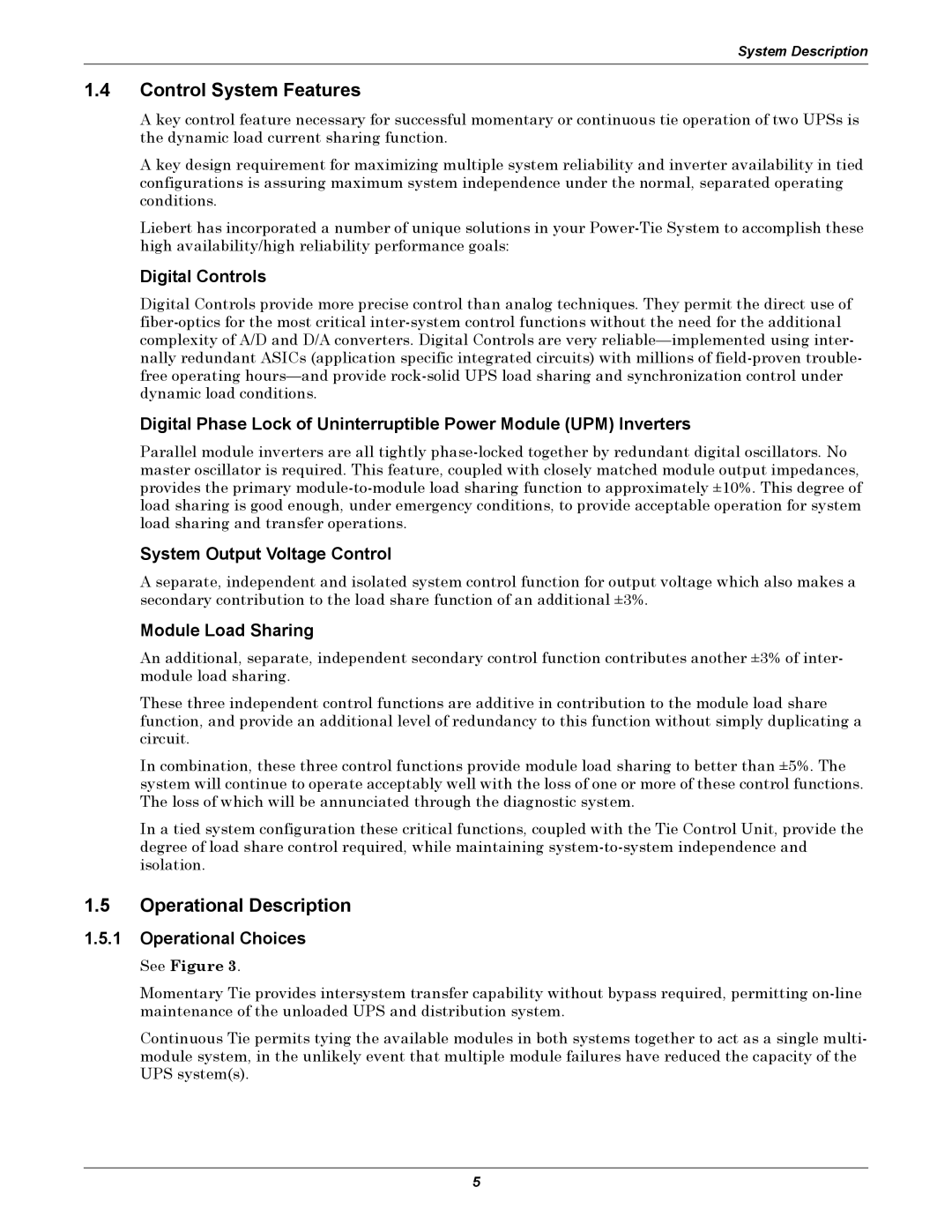
System Description
1.4Control System Features
A key control feature necessary for successful momentary or continuous tie operation of two UPSs is the dynamic load current sharing function.
A key design requirement for maximizing multiple system reliability and inverter availability in tied configurations is assuring maximum system independence under the normal, separated operating conditions.
Liebert has incorporated a number of unique solutions in your
Digital Controls
Digital Controls provide more precise control than analog techniques. They permit the direct use of
Digital Phase Lock of Uninterruptible Power Module (UPM) Inverters
Parallel module inverters are all tightly
System Output Voltage Control
A separate, independent and isolated system control function for output voltage which also makes a secondary contribution to the load share function of an additional ±3%.
Module Load Sharing
An additional, separate, independent secondary control function contributes another ±3% of inter- module load sharing.
These three independent control functions are additive in contribution to the module load share function, and provide an additional level of redundancy to this function without simply duplicating a circuit.
In combination, these three control functions provide module load sharing to better than ±5%. The system will continue to operate acceptably well with the loss of one or more of these control functions. The loss of which will be annunciated through the diagnostic system.
In a tied system configuration these critical functions, coupled with the Tie Control Unit, provide the degree of load share control required, while maintaining
1.5Operational Description
1.5.1Operational Choices
See Figure 3.
Momentary Tie provides intersystem transfer capability without bypass required, permitting
Continuous Tie permits tying the available modules in both systems together to act as a single multi- module system, in the unlikely event that multiple module failures have reduced the capacity of the UPS system(s).
5
